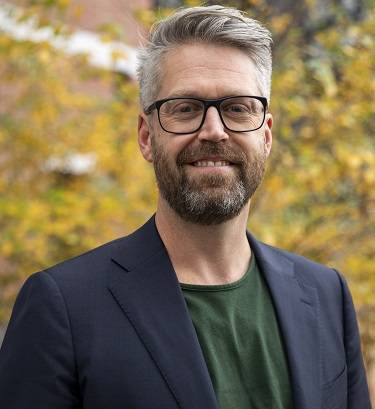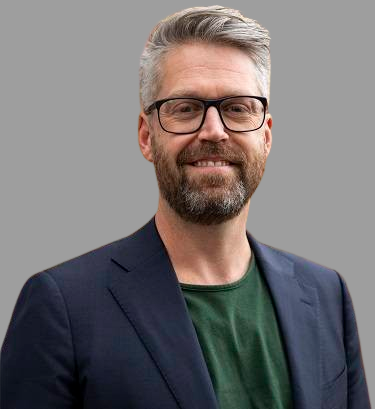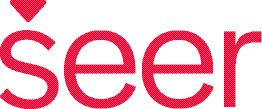The Technology Unlocking at-Home Diagnostics and Monitoring
With a background in machine learning, medical research, neural modelling, and electronic engineering, Dr Dean Freestone is a highly accomplished individual. As the CEO and co-founder of Seer – creators of leading epilepsy diagnostic and monitoring technology – Dr Freestone is a passionate technology enthusiast with a deep belief in its power to solve critical healthcare delivery issues at scale.
Seer has been awarded millions of dollars in research grants and funding and is today Australia’s leading epilepsy diagnostic service. With humble beginnings from a small office in St. Vincent’s Hospital in Melbourne, Australia, Dr Freestone co-founded Seer alongside Professor Mark Cook and Ms George Kenley in 2017. Now poised to expand internationally, Dr Freestone spoke to us about Seer, its technology, and their ambitions to make healthcare and diagnostics more accessible:
The conception of Seer
Seer’s origins link back to Dr Freestone’s initial PhD and research goals, which focused on understanding epilepsy,the discovery of new treatment methods, and seizure risk forecasting. “We started Seer in 2017 when the research had developed to the point where it was ready to go to market in product form. We were eager to maximize the potential impact of this research.”
“Epilepsy is common, with chronic epilepsy affecting 1-2% of the global population – or upwards of 65 million people. It requires a clinical diagnosis, which typically involves a long-term, uncomfortable and costly hospital stay. Long hospital waitlists mean extended periods where patients face unnecessary, anxious periods before they even reach a conclusive diagnosis.”
Dr Freestone reminisces how he and the co-founders saw the opportunity to create a new version of diagnostic monitoring – one that was more accessible, scalable through technology, and driven by a keen focus on the patient.
As a result, Seer has reimagined how and where people undergo long-term monitoring for faster paths to diagnoses and better patient outcomes.
Seer – Breaking Down Complexities
Through its patented neurodiagnostic technology, Seer is able to improve the lives of patients and contribute to smarter decision-making in therapeutic treatments on the part of medical professionals.
As Dr Freestone explains, “We’ve transplanted week-long epilepsy diagnostics out of the hospital and into the home. Through our proprietary medical technology – a state-of-the-art portable video-EEG-ECG equipment diagnostic system that captures brain and heart activity – patients receive gold-standard monitoring that captures accurate data over a number of days.’’
Dr Freestone and the team at Seer fundamentally believe that technology can be used to support people in actively managing their health. “There are a lot of tests that are traditionally done in hospitals because of technology limitations, rather than people really needing hospitalisation. Now more than ever, we want to break the bottlenecks in the system so people can have greater access to services.” Through its IP, Seer provides access to essential (and lifesaving) monitoring and diagnostics in ways that don’t burden critical infrastructure – ensuring hospitals are used for the people who need them the most.
The Flagship Mechanisms
Seer harnesses a variety of innovations to improve the diagnosis and longer-term management of epilepsy.
Seer Home™, the complete solution for home video-EEG breaks diagnostic monitoring free from hospitals, making it more affordable, more accurate and providing a better patient experience.
“Used for our long-term monitoring and diagnostics (between 3-10 days), the Seer Home solution combines state-of-the-art technology and the best in consumer design to create a system that is both easy to wear and produces trustworthy results.”
“Seer Sense® is the revolutionary wireless brain and heart monitoring wearable at the centre of the Seer Home solution. The device – a flexible, lightweight product rests over the shoulders like a collar or necklace – delivers a step change in patient comfort and freedom while empowering doctors with the data they need to make a conclusive diagnosis.”
The mobile nature of the Seer Home system allows improved patient comfort while desperately needed hospital beds are freed up for in-person care. It also delivers accurate, high-quality data which is essential for patient diagnosis. Data is collected and evaluated using Seer Cloud, which helps neurologists and clinicians manage, review, and report on their patients faster – and from anywhere.
“With Seer Cloud, neurologists can navigate to points of interest in the data and watch events simultaneously with EEG and ECG traces,” explains Dr Freestone. “In terms of patient data review, what could typically take up to 40 hours in labour time costs for a neurophysiologist to review can now be fast-tracked through Seer’s technology, allowing Seer and its clinicians to support more patients and help them to reach a diagnosis faster, and with accuracy.’’
For longer-term monitoring and disease management, Seer has created Seer Health, digital health tools that can be used by patients over months and years.
“Seer Health is designed to support the 30% of people living with drug-resistant epilepsy to manage their health and live fuller lives with less uncertainty.” The Seer app is one of these digital tools simplifying day-to-day management for people living with epilepsy. “The app helps to track and record seizure events – in a format that can be easily shared with doctors at consultation – while medication reminders keep patients on track with their treatment plans.”
The digital tool closest to Dr Freestone’s heart is Seer’s soon to be released seizure risk forecasting capability. “The ability to predict seizures is cited by most patients as something that would have the biggest effect on their life. In collaboration with our globally leading network of medical researchers, Seer has made critical scientific breakthroughs related to sensing modalities and seizure forecasting, and will soon have a feature available in market to help people living with uncontrolled epilepsy accurately forecast their risk of seizure. This will deliver exponential benefits in terms of both peace of mind and quality of life.”
The MedTech Journey
“My pathway to becoming a founder is primarily about an evolution from academia to industry – or more specifically, from pure research to translational research. It was a purposefully targeted approach for me to do research that would have commercial or real-world application.”
“My early research also incorporated implantable devices for brain stimulation and recording large data sets. The evolution of these early research interests to the scientific breakthroughs we’re now able to fast track to market as technological solutions at Seer is very satisfying.”
Challenges Galore
Dr Freestone explains how the company took a calculated risk approach in addressing the challenges faced in the medtech sector.
“Firstly, we relied on the enabling technologies maturing. Our offering centred on the ability to acquire, transmit and process data from the home environment. To do this we needed to develop exceptional devices that work for long periods of time without any human or expert intervention, and we needed the ability to take the data from our device and to connect it via the internet.” Luckily for Dr Freestone and Seer, their investments paid off.
Dr Freestone is enthusiastic about the possibilities in the healthcare sector today. “It’s an incredibly exciting time for medtech innovation and development. The industry has witnessed a number of macro changes that have primed the sector for rapid technological advancement – and superior patient experience and patient outcomes flow through from there,” he adds. “COVID has also accelerated the widespread adoption of telehealth – for example through trends away from in-person health consultations to telephone and video consultations.”
He notes that a number of challenges still remain, such as the widespread adoption of digital health tools by medical practitioners. “We know that the medical industry is slow to change, and we completely understand why this is the case, given the amount of risk that medical professionals undertake. This is still a factor in our future success, but one that we completely understand and are working towards mitigating.’’
Leadership Traits
Leaders should be able to ask people to do things that they haven’t yet realised were possible. “You have to convince them of the possibility of the task. This is something that I realised I needed to do right from the start,” explains Dr Freestone. “Having a clear vision and making it tangible for everybody is critical. It’s not something that necessarily comes naturally to everyone, but it’s certainly something I’m constantly working at.”
Finding the right people and bringing them together is also key to startup success. “In addition to being a team builder and collaborative in nature, the strongest trait I have is my competitive nature and grit,” he adds, “these particular traits have translated well from my scientific research to the more recent roles of entrepreneur and CEO.”
Word of Success
Overcoming fear of failure comes back to belief, says Dr Freestone. “You have to absolutely believe that what you’re creating adds value to the world. If you really believe that, and you can show it from first principles, then it becomes a matter of time – when, rather than if, you will succeed.”
Dr Freestone also urges industry experts to trust the data and use it to solve the challenges before them. “From our early days it’s been about putting one foot in front of the other and solving the most pressing problems first. Now that we’re moving into another growth phase, the process may get more sophisticated, but the concepts are essentially the same.’’
Start-ups in MedTech Industry
The big opportunity for medtech lies in the ability to use the Internet in healthcare, believes Dr Freestone. “There’s a real momentum for change driven by the combination of devices that can be used in the home, enabled by superior mobile networks, cloud computing, and machine learning technologies. Only recently have we been able to pull these technologies together. More integration, more bandwidth and lower costs of moving data present real opportunities in healthcare and medtech.’’ Noting that AI, when combined with human expertise, will be incredibly transformative for healthcare, he observes that the challenge for companies will now be about organisation. “How can companies harness all the information and data available and leverage it for insight through machine learning and AI? It’s an engineering and technological challenge, certainly.”
The Success Mantra
Dr Freestone draws inspiration from reading the stories of successful founders. “I find it empowering to see that those in successful positions do not differ greatly from us. Understanding what sets people apart is not often particularly revealing, but rather, it’s what unites them that is special- it’s the belief they have in themselves and in what they create.’’
This medtech founder believes in putting the patient and their experience at the centre of the solution, exploring ways that technology can be used to support them through diagnosis and monitoring. “We believe in a new user-centric, home-based approach to healthcare. We think deeply about how we can redesign the end-to-end healthcare experience, with the goal of making the monitoring experience easier and more comfortable for our patients. In doing so, we’re able to deliver care in a way that provides patients with more autonomy and medical experts with more accurate data to inform their clinical decisions.” But it still comes back to patient experience, Dr Freestone insists. “Even if we create the world’s best technology, if it’s not easy and comfortable for our patients to use, we’ve lost them.”
Seer – Moving Ahead
Seer’s research and development is driving forward the global understanding of epilepsy. Regularly presenting at leading epilepsy conferences and symposia, Seer has registered three seizure forecasting patents and published over 20 seizure forecasting papers in top-tier medical and scientific journals. The firm has also received the necessary regulatory approvals in Europe and is expecting US Food and Drug Administration approval by the end of 2021. It has also secured significant commercial and research partnerships with leading organisations including Fitbit, the Mayo Clinic and King’s College Hospital and has strong links with Epilepsy Foundations in America and Australia.
While its immediate focus is on epilepsy, Seer’s roadmap also includes home-based solutions for diagnosing cardiac and sleep conditions,” explains Dr Freestone.
“Addressing epilepsy first means we have drawn on our natural networks and deep expertise in the field, while developing intellectual property that can be repurposed and extended for other conditions,’’ he signs off. “We’re deeply committed to leading this radical shift in healthcare which will take clinical-grade monitoring out of the hospital and into the home, making it more accessible to all.”

Company: Seer
Website: www.seermedical.com
Management: Dean Freestone, Co-Founder & CEO
Founded Year: 2016
Headquarters: Melbourne, Victoria
Description: Seer is a medical technology company that specializes in addressing neurological conditions.




